Reducing the friction between you and your guitar setup can make a big difference in your playing and recording. I figured out a good method which I’ll share with you.
1) Connect a power bar to an outlet
2) Bring it near where you play
3) Turn on your power bar
4) Leave your amp’s power switch on
5) Connect the pedal power supplies first
6) Connect the amp after
7) To disconnect, turn off the power bar and then disconnect the amplifier’s power cord
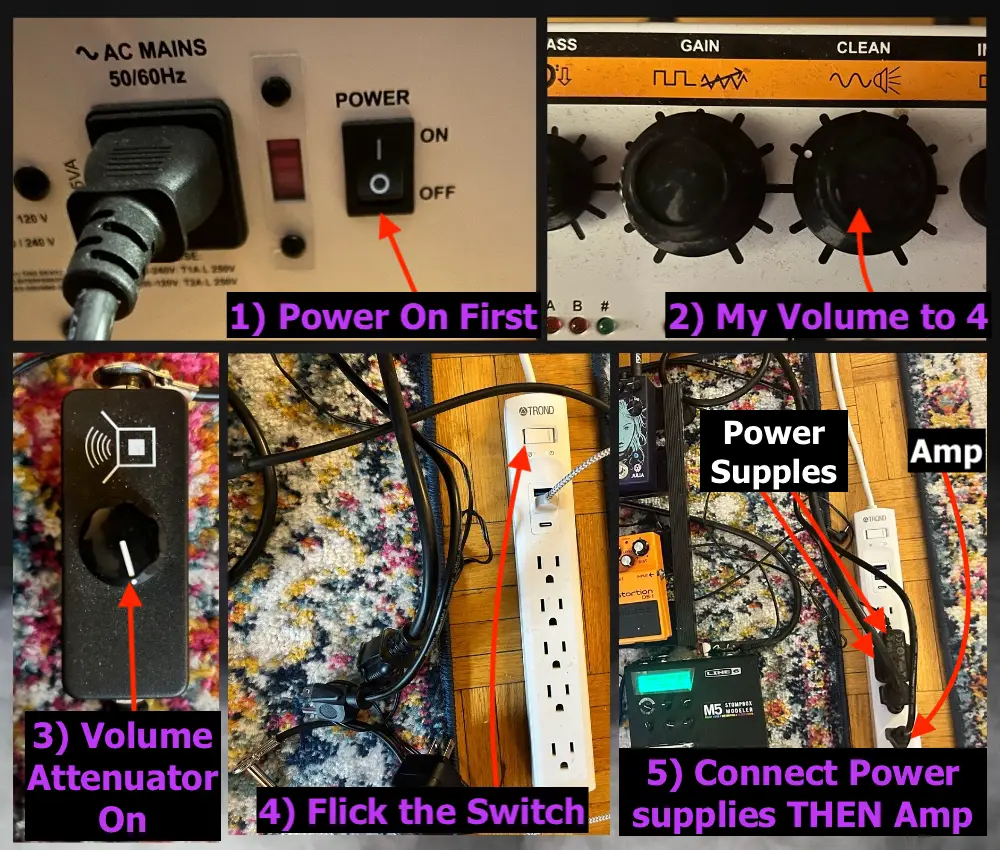
Key Products Needed
- Power Bar / Surge Protector (10-15 ft)
- Amplifier Cable (15 ft)
- Power Supply
Let me break everything down for you in more detail in the following sections.
What Gear You Need to Make This Possible
1) Trond Power Bar & Surge Protector (15 ft Cable)
![Ditto X2 on Power Bar - Where to Put The Flanger In Your Signal Chain? [ANSWERED] - 1](https://travelingguitarist.com/wp-content/uploads/2023/08/Ditto-X2-on-Power-Bar-Where-to-Put-The-Flanger-In-Your-Signal-Chain-ANSWERED.jpg)
As I’ll say again in a second regarding the long amplifier cable, you want to make sure your power bar cable is long enough.
I recommend at least a 15-foot cable to ensure you have the freedom to set up your equipment wherever you prefer.
Just think hard about how you want your set-up to look first and then imagine how much length you’ll need. Find that number and then double it just to be safe.
Don’t stunt your configuration’s effectiveness and efficiency. It’s the whole point.
My power bar, for example, is on the other side of the room because it’ll trip the breaker if I put it with the outlet that’s occupied by my air conditioner.
2) Long Amplifier Cable
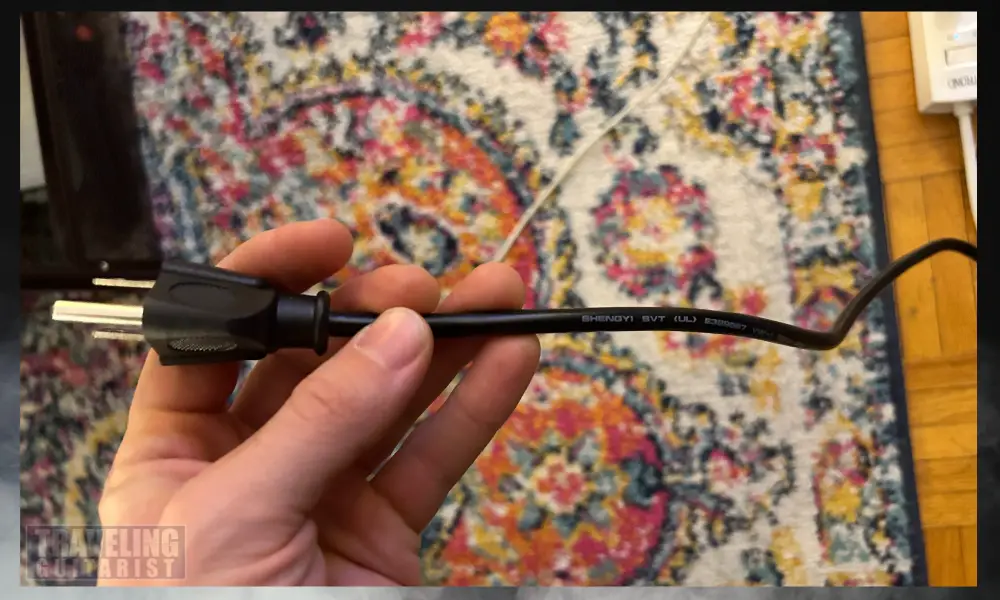
Same thing here. Make sure it’s long enough to actually go to wherever you need it go. This is super important, otherwise, you won’t be able to set up your amp and the rest of your equipment as close or as far as you want.
3) Power Supplies
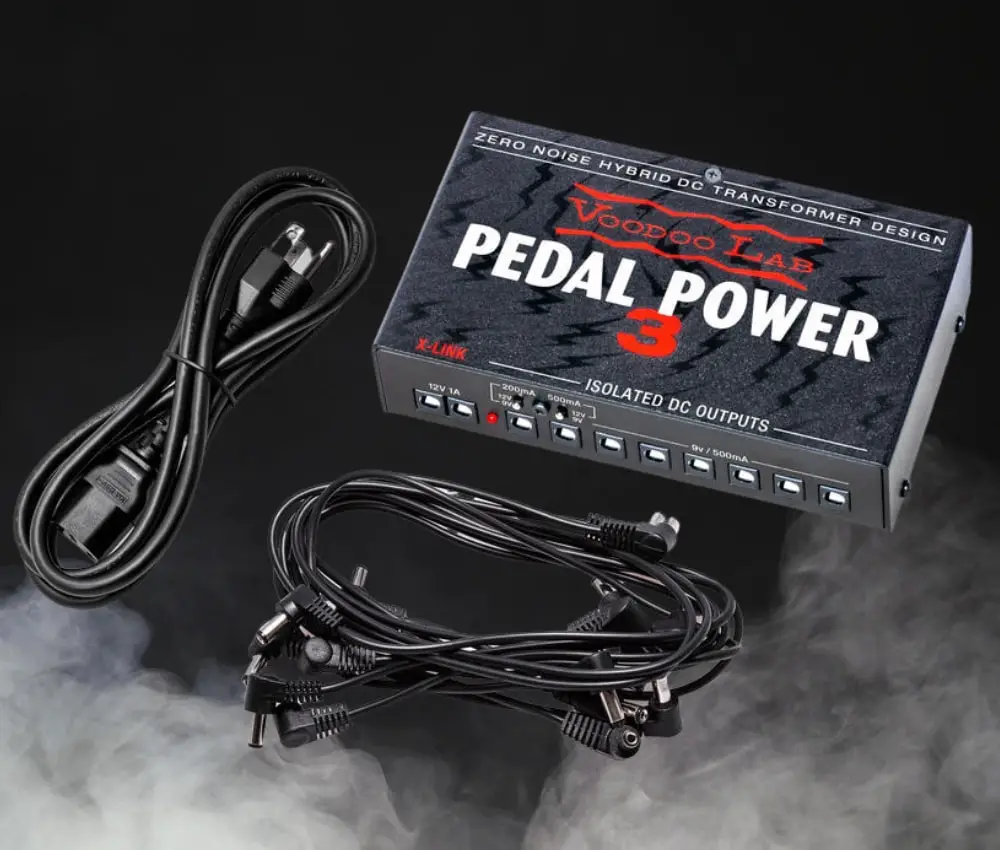
You can use whatever kind of power supply you want, but the Pedal Power 3 + is a standard for a reason.
How to Set Up The 1-Switch Apparatus
1) Connect the Power Bar/Surge Protector To An Outlet
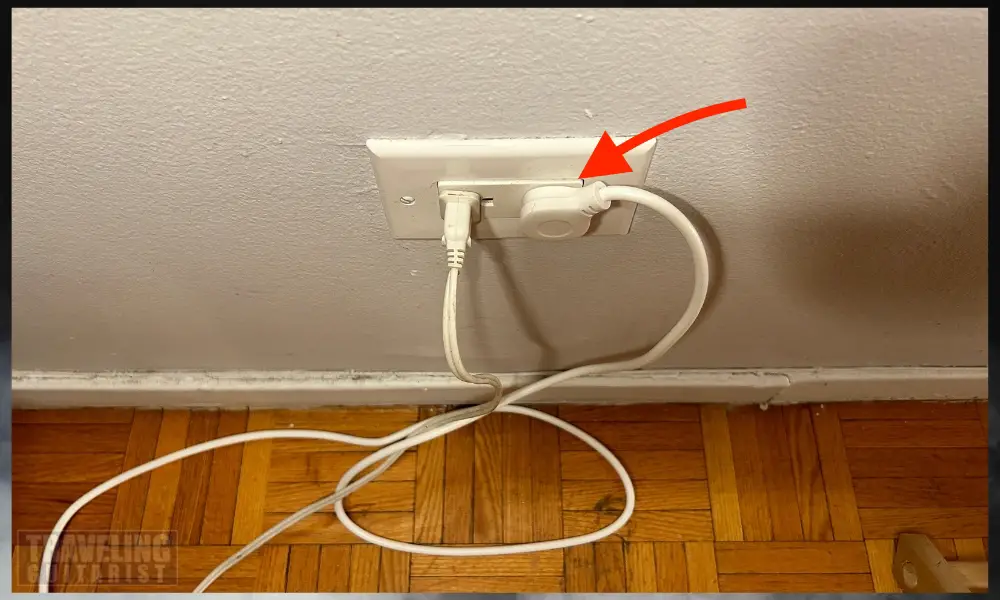
2) Bring The Power Bar Close To Where You Play
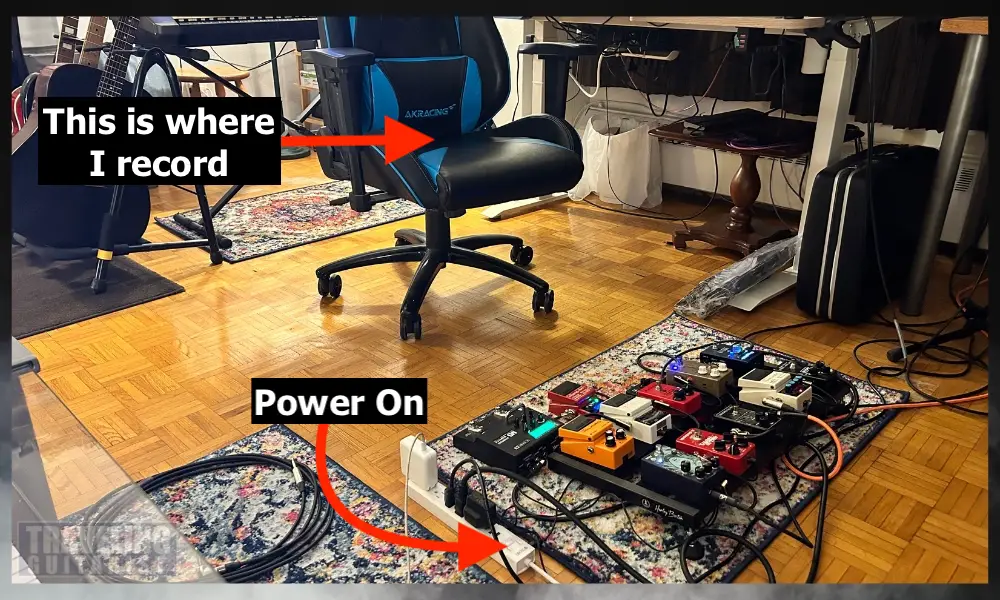
It also has the added benefit of isolating some of the sound and inhibiting pesky reverberation.
3) Turn the Amp On & Leave It On
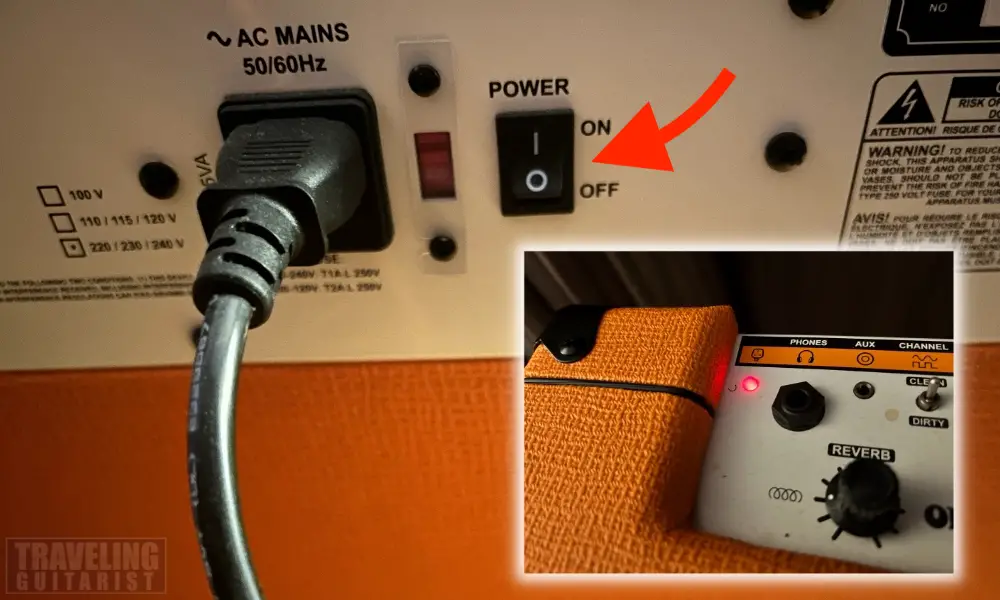
While convenient, consult your amp’s manual to ensure this practice won’t lead to premature wear.
4) Connect Your Pedals’ Power Supplies First
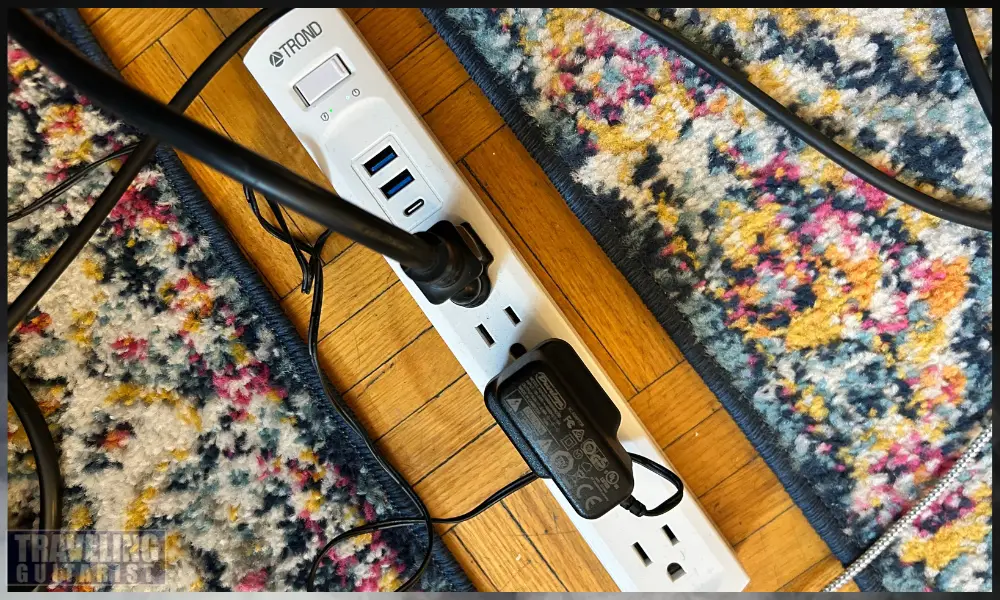
The nice thing is that you can you do as I said earlier and plug in everything else, including smart phones, RGB lights, laptop adapters, single pedal adapters, or anything else you may need.
5) Use the Long Amplifier Cable to Connect to the Bar
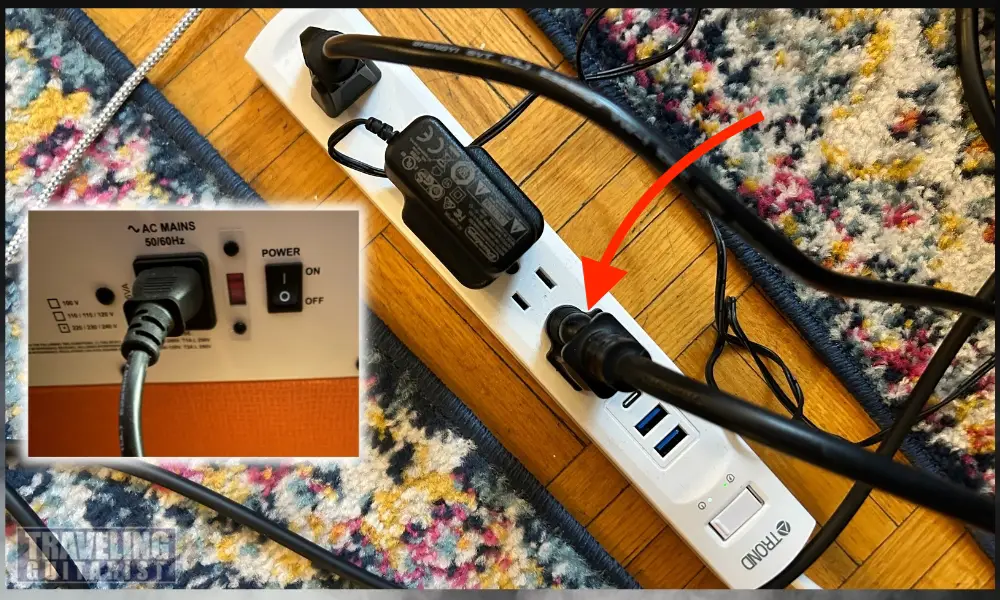
6) Use the Power Bar & Amp Cord As Your Main Switches
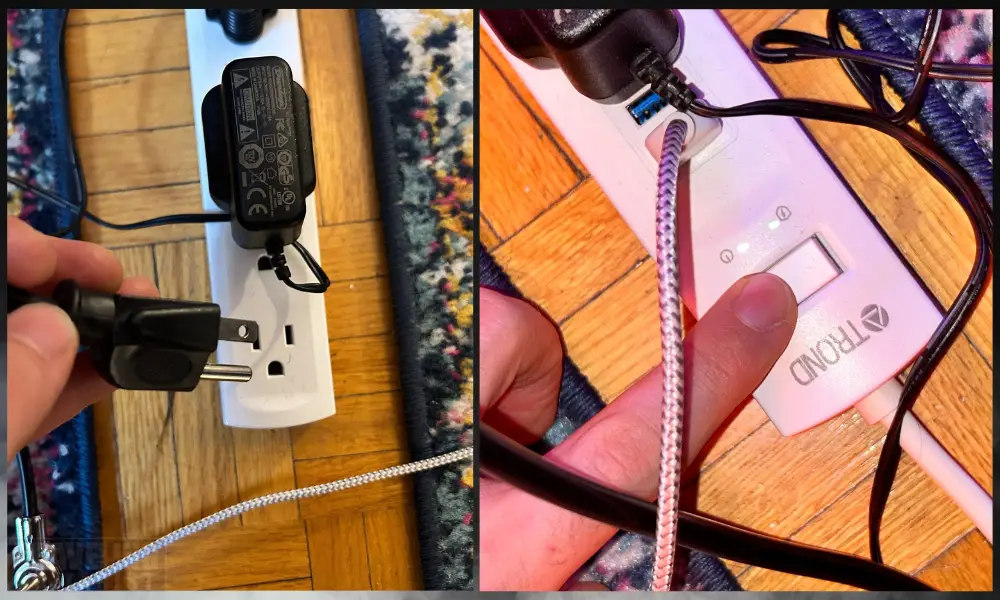
Once you’ve got everything set up, you’ve got a super easy way to get all of your equipment up and running. This saves a lot of bending over, reaching over shelves, etc.
If you’re living in a small place like me, having streamlined and efficient processes like this helps quite a bit. Although, this will help regardless of the kind of space you’re in.
3 Things You Should Know About This Process
1) A Command Strip Works Well for Securing the Power Bar
You don’t have to mount your power bar to your floor, but I find it works well for securing it in place. It won’t move then. I’m using a simple Command Strip.
These are readily available on Amazon and they won’t damage your floor or wherever else you decide to put it. Read the instructions before placing it.
2) Using Tape or Zip Ties to Secure Wires Together
This will help keep your work-space nice and neat as well, rather than having wires hanging everywhere.
3) Turning Everything On At Once Creates A Popping Sound
When you turn on 12 guitar pedals, an amplifier, and a power supply all at once, some of the pedals will create a sound or activate a feature automatically. I find this creates a benign popping sound.
If it does concern you, one way you can get around it is to plug in your power supplies first, and then turn your amplifier on afterward. This will eliminate that sound.
8 Safety Considerations You Should Keep in Mind
Surge Protection: Ensure that the power bar has a built-in surge protector. This is crucial for protecting your gear from sudden spikes in voltage which can damage sensitive electronic components.
Power Rating: Check the power rating of the power bar and ensure it’s sufficient for the combined load of all your devices. Overloading the power bar can create a fire hazard.
Quality of the Power Bar: Invest in a high-quality power bar. Cheaper ones might not provide the level of protection or durability you need for expensive music equipment.
Amp Switch: Leaving the amp’s power switch on and using the power bar to turn it on and off isn’t generally recommended. Frequently powering up an amplifier this way can potentially cause a surge of electricity that might shorten its life over time. However, some modern amps are designed to handle this better than older models.
Heat Dissipation: Ensure that all devices, especially the amplifier, have adequate ventilation. Amps can generate a lot of heat, and if they’re not properly ventilated, this can lead to overheating and damage.
Grounding: Make sure that your power bar is properly grounded to avoid any electrical hazards.
Regular Inspection: Regularly inspect your power bar and cables for any signs of damage, wear, or overheating.
Consult Manuals: Check the manuals for your specific equipment to see if the manufacturers provide any guidance or warnings about power sources and turning the equipment on and off.
Let me know what you think of this set-up in the comments. Do you have a better way of doing it? I’m all ears.


 Written By :
Written By :
